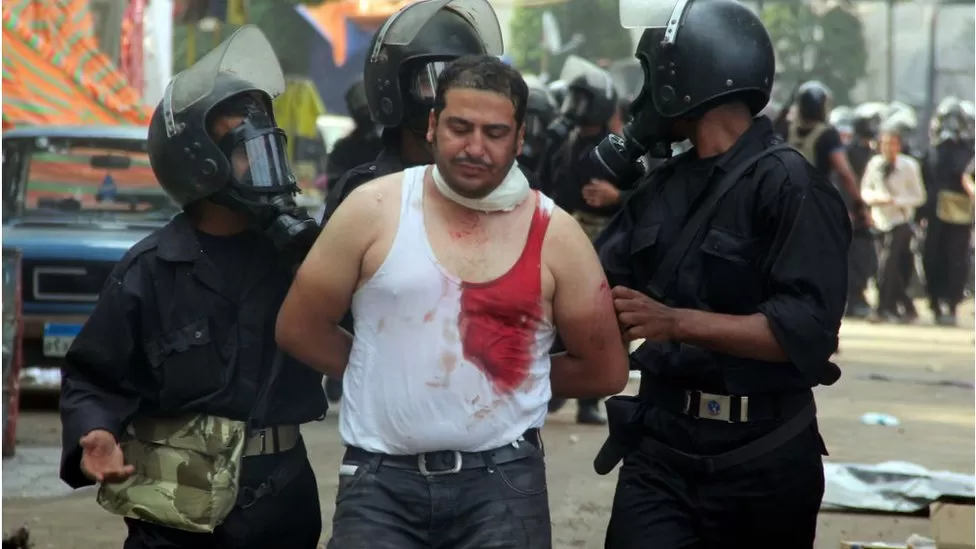Egypt Rabaa killings pain lingers 10 years on

Protests were held by supporters of the recently ousted Islamist president. One of Egypt’s darkest moments was the crackdown on followers of Mohammed Morsi. BBC Arabic’s Sally Nabil reports from Cairo that memories of that day are still raw.
In Rabaa al-Adawiya Square, east of the capital, Amr participated in a sit-in that lasted nearly 50 days.
Amr was only 20 when he saw bulldozers crushing tents and sweeping everything in their path.
“On that day, humanity was wiped out in Egypt,” he says.
Amr was arrested a few months after Rabaa, accused of damaging public property and disrupting public order, among other things. After nearly five years in prison, he fled Egypt and settled in the UK in late 2018.
He participated in the sit-in because he feared his country would fall into the hands of the army generals. Rabaa and Nahda Square sit-ins violently dispersed on the same day were not only unprecedented tragedies in Egypt’s recent history, but also gamechangers for the Arab world’s most populous country.
During the 2012 elections, Mohammed Morsi, a leader of the Islamist Muslim Brotherhood group, became Egypt’s first democratically elected president. For his supporters, it was an extraordinary victory.
However, one year later, anti-Morsi protestors demanded his resignation. He was accused of following an Islamist agenda and failing to be president for all Egyptians. Over the past 70 years, the army has dominated politics.
Following the protests, Abdul Fattah al-Sisi, the Minister of Defence, removed Mr Morsi from power, ending the short-lived civilian rule. A year later, Mr Sisi was elected president and has held the position ever since. According to the Egyptian authorities, they repeatedly requested the Muslim Brotherhood leaders to end the “illegal” sit-in, but they were ignored. Rabaa al-Adawiya square was considered a rebellious area by the state.
Amr never imagined that live ammunition would be used. He thought police forces would use softer tactics, such as water cannons or tear gas. Political divisions led to the loss of so many lives, he said.
He recalls seeing dead bodies everywhere. We couldn’t count. We couldn’t help each other.”
As he recounts the day’s events, his breathing becomes heavy.
“I saw women and children raising their hands, leaving the sit-in, when they were shot dead by snipers. I saw them with my own eyes.”
Before sending in troops, the authorities opened safe corridors for people to leave. One year after the dispersal, a report was published
